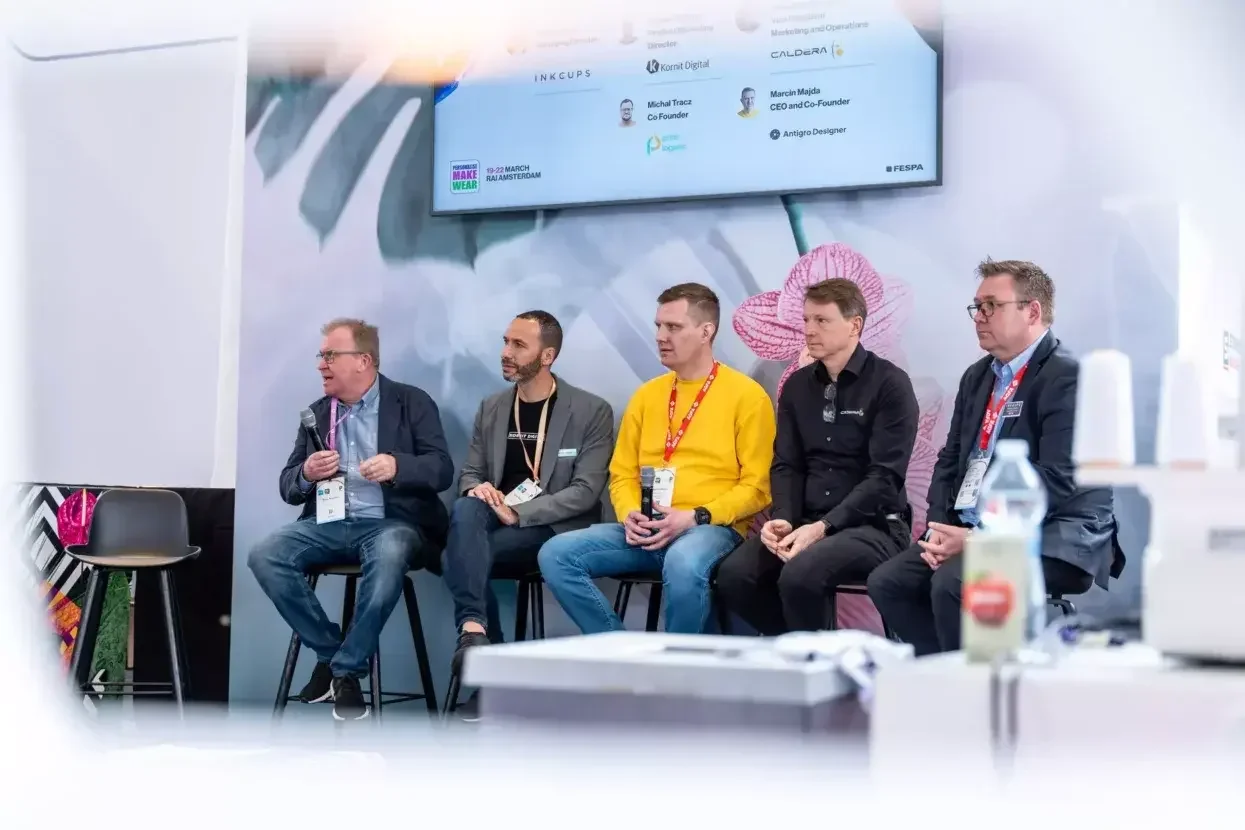
Debbie McKeegan speaks to industry specialists at Personalise Make Wear in Amsterdam about smart factories and customisation technology. Debbie speaks to Antigro, Caldera, Print Logistic, Inkcups and Kornit Digitial.
First recorded live at Fespa Amsterdam, this conversation with industry specialists hosted by Debbie McKeegan, Fespa, Textile Ambassador explores the topic of smart factories and customisation technology. We discuss the necessary elements of smart production: such as digital print, automation, workflow, and the seamless integration of different technologies. Also highlighted is the importance of colour management and quality control in the production process to leverage opportunities for mass customisation and personalisation